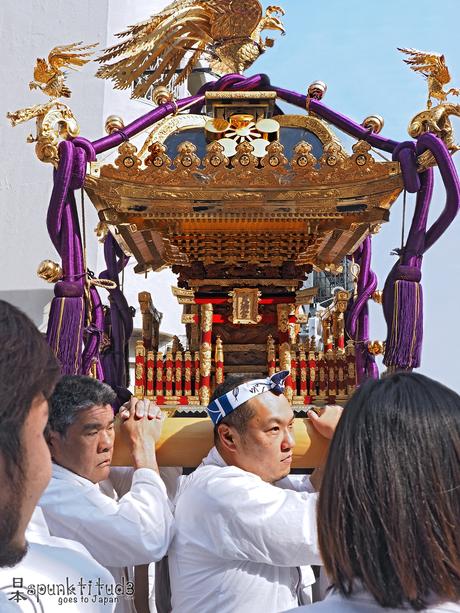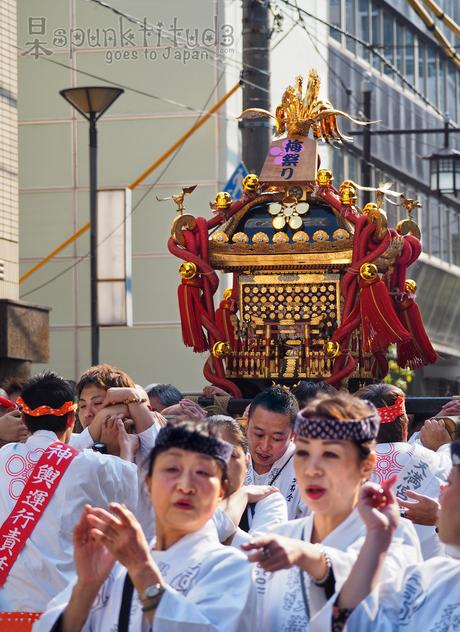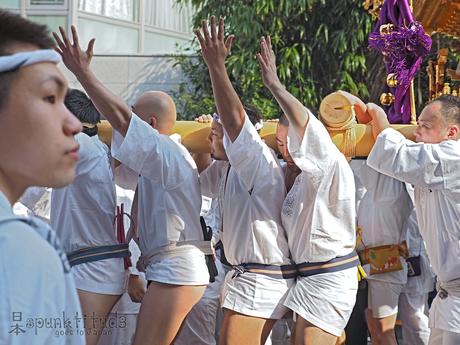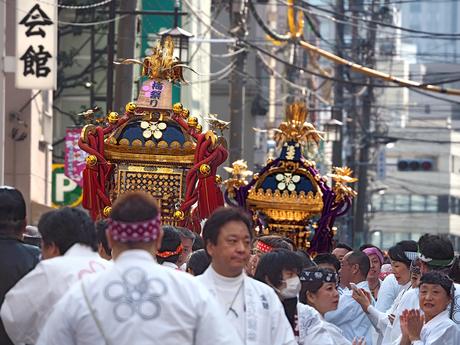 I was fortunate enough to chance upon a mikoshi 神輿 parade when I was at Yushima Tenjin for its Plum Blossom Festival.
I was fortunate enough to chance upon a mikoshi 神輿 parade when I was at Yushima Tenjin for its Plum Blossom Festival. 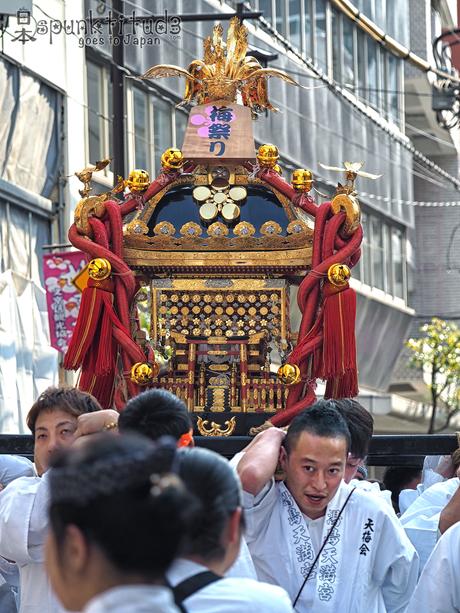 A mikoshi 神輿 is a divine palanquin or portable Shinto shrine which transports a deity while moving between main shrine and temporary shrine during a festival or when moving to a new shrine. During festivals, they bring the mikoshi around the neighbourhood to bring blessings to the area.
A mikoshi 神輿 is a divine palanquin or portable Shinto shrine which transports a deity while moving between main shrine and temporary shrine during a festival or when moving to a new shrine. During festivals, they bring the mikoshi around the neighbourhood to bring blessings to the area.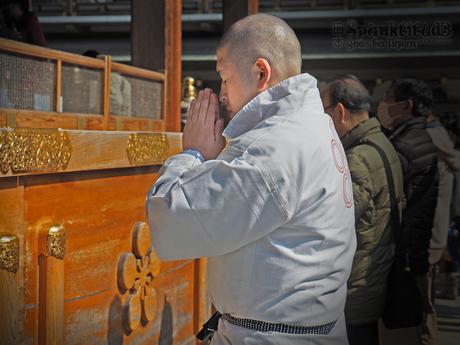 Saying a prayer before the mikoshi procession. People sign up to be mikoshi bearers as they believe they can get a bountiful harvest or blessings for the year.
Saying a prayer before the mikoshi procession. People sign up to be mikoshi bearers as they believe they can get a bountiful harvest or blessings for the year.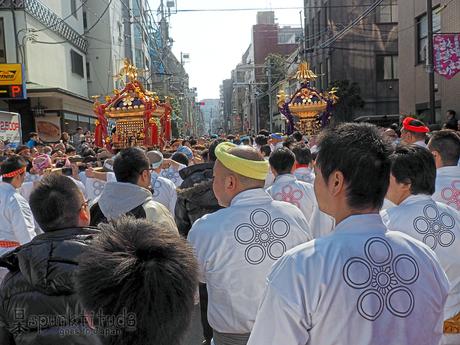 And off goes the parade. Such processions usually start and end at a Shinto shrine.
And off goes the parade. Such processions usually start and end at a Shinto shrine.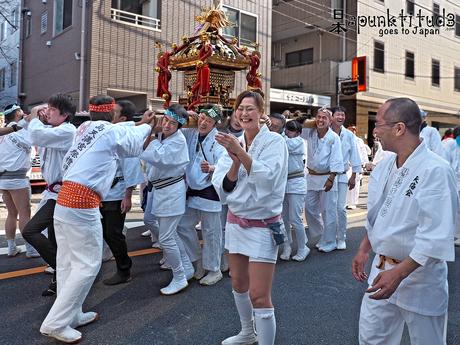 As they parade down the street, mikoshi bearers will shout a loud chant to encourage themselves to carry a palaquin that can weigh over a tonne. There are 4 different styles of shouldering, all with a different chant. The beareres may also toss the mikoshi to ‘amuse’ the diety inside.
As they parade down the street, mikoshi bearers will shout a loud chant to encourage themselves to carry a palaquin that can weigh over a tonne. There are 4 different styles of shouldering, all with a different chant. The beareres may also toss the mikoshi to ‘amuse’ the diety inside.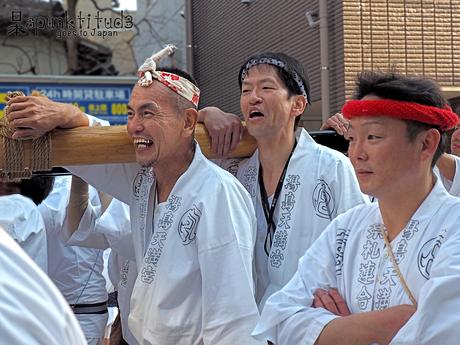
The most common method of shouldering in Japan is “Hira-katsugi 平担ぎ” where the beareres shout “wasshoi わっしょい,” and may or may not toss the mikoshi. For the “Edomae style | 江戸前” which is seen at the Asakusa Sanja Festival, bearers shout “say ya, soi ya, sah, sorya” and sway the mikoshi rapidly. “Dokkoiドッコイ ” shouldering style is seen in Shonan in Kanagawa Prefecture where the mikoshi is moved up and down rhythmically, and more slowly than in the Edomae style. Bearers shout “dokkoi dokkoi dokkoi sorya” and there is a song called a “jink” (lively song).
“Dokkoiドッコイ ” shouldering style is seen in Shonan in Kanagawa Prefecture where the mikoshi is moved up and down rhythmically, and more slowly than in the Edomae style. Bearers shout “dokkoi dokkoi dokkoi sorya” and there is a song called a “jink” (lively song).
